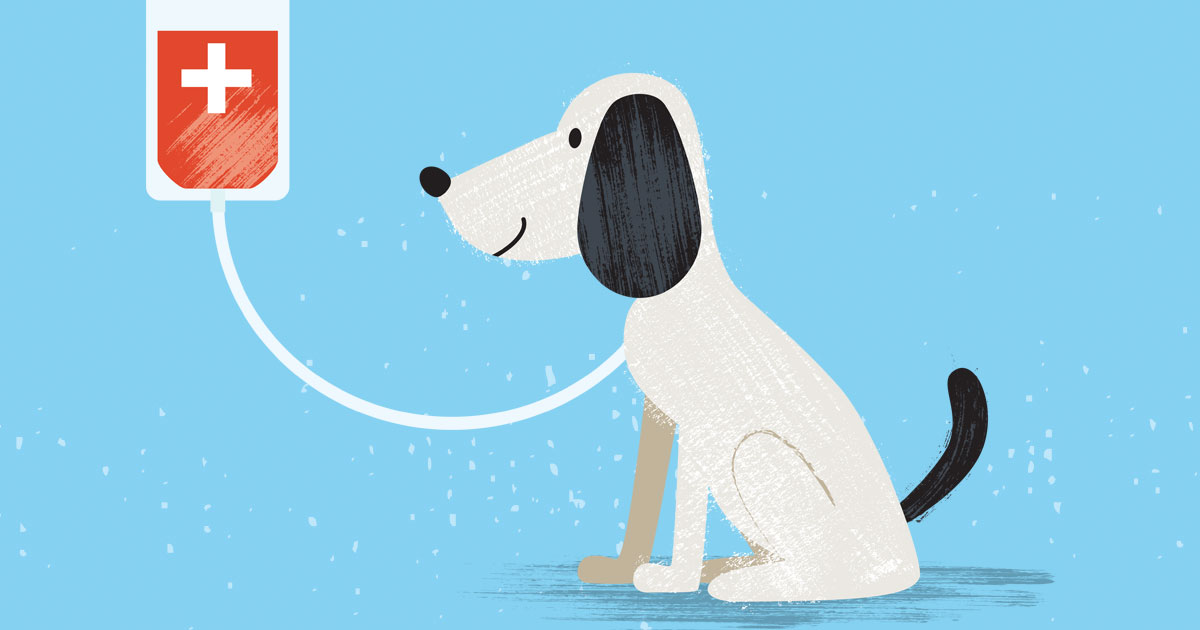Giving the gift of life, donating blood, isn’t just for humans. Dogs and cats can give blood and help a fellow furry friend survive surgery, illness and other health crises requiring blood transfusions. As with humans, there is often a shortage of blood supply for pets. In some veterinarian practices, cats are kept in-house for the purpose of donating blood to felines in need, but for dogs, blood donations are often sought from the community with new donors always needed.
Veterinary medicine is becoming increasingly advanced, offering innovative ways to prolong and enhance the lives of our four-legged family members. Medical procedures and surgeries are on the rise and, as a result of these advancements, the demand for canine blood transfusions has increased sharply.
A New Idea Whose Time Has Come
The development of canine blood banks is a relatively new idea, but it’s one whose time has come. Many areas in our country have regional dog blood banks, but still many veterinarians have to rely on blood donations from their own dogs or those of a colleague or client. Locally, Carolina Vet Specialists, in Winston-Salem, which deals mainly with animal emergencies and surgeries, is the main supply of dog blood and is often used in the many surgeries they do and for patients in need of transfusions for other medical issues.
Requirements to Donate
Similar to humans, in order to be eligible to donate blood, dogs must be in general good health. To this end, donors must be current on their required vaccinations, including distemper, parvovirus, parainfluenza, hepatitis and rabies; they must also be free of any medication other than flea, tick and heartworm preventative. Dogs who have received blood transfusions and/or those with heart murmurs or other cardiac conditions are ineligible to donate blood. Age and weight requirements vary too, depending on the donation program.
After meeting the basic requirements and before the donation process can begin, dogs are given a complete physical, blood chemistry profile and complete blood count. Donors are also screened for other possible conditions like Rocky Mountain Spotted Fever and Lyme Disease.
Process of Donation
The process of canine blood donation is simple, much like its human counterpart. Blood donation typically lasts about 30 minutes. Dogs are gently placed on their sides, settled in on comfortable bedding and soothed while the area on and around the jugular vein is cleaned and prepped. Once the area has been sterilized and, if necessary, clipped or shaved, blood is then drawn through a needle into a sterile collection set. Post collection, the dogs are given belly rubs, treats and, if needed, IV fluids to help with hydration. Once the blood has been collected, it receives similar processing as human blood after donation. After donation, most veterinarians suggest letting the dog have a day of rest and limited activity, plus a little extra TLC.
Just as people have blood types, so too do dogs to a certain extent. Rather than “types,” canine blood varieties are commonly referred to as “groups.” Dogs have around 12 different blood groups, five of which are fairly common. As with humans, there are dogs that are classified as “universal donors” based on their group, making them the ideal donors. Greyhounds are frequently used as canine blood donors, as the breed tends to have the type of blood that can be used for all dogs with minimal reactions.
If you have an interest in having your dog donate blood to help other dogs, contact your veterinarian and see if they have a donation program.



















